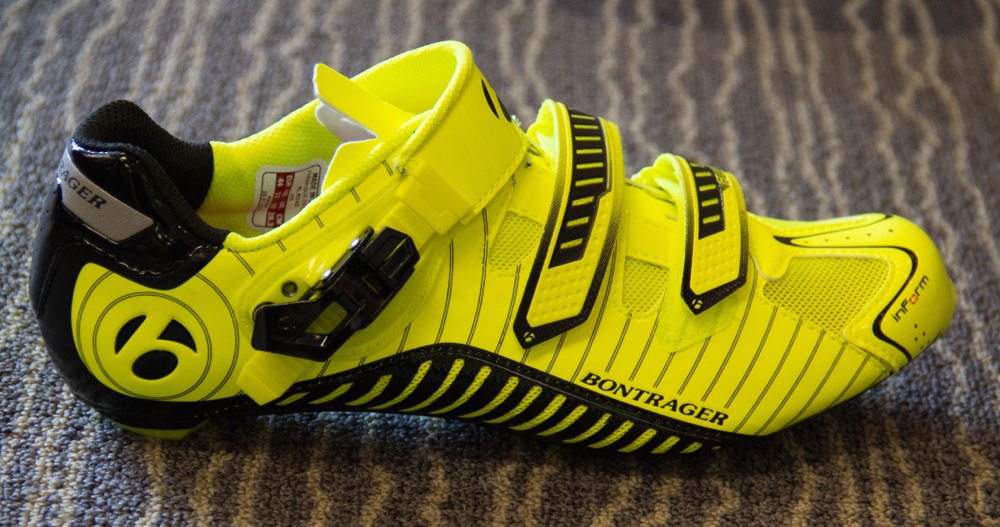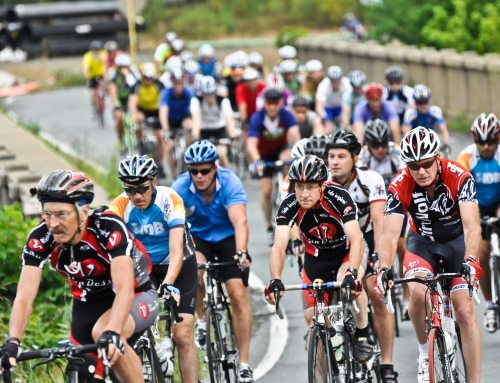By Thomas Henson Jr.
High-visibility (or hi-vis) clothing for cyclists is now recognized as an important safety option, as crucial as correct lighting and wearing a helmet. Only a few years ago, just about the only time you would see ultra-bright, hi-vis clothing would be during a sponsored ride, such as the American Diabetes Association’s Tour de Cure. Those long-distance tour cyclists were the first adopters of hi-vis wear to give them a safety edge on the often high-traffic mapped rides. Now, the trend is for all riders—beginners and elite athletes—to turn on the bright.
Screaming Yellow
The goal is to increase your chances of being seen at all times while you’re cycling. Hi-vis clothing accomplishes that goal during daylight hours and in the gray of dawn or dusk. And when paired with reflective elements, hi-vis gear makes night riding safer, too. All this is especially important now that we’re going into the winter months, when darkness falls earlier.
Stepping away from bikes for a moment: Research into car colors has found that lighter and brighter color cars—yellow, white, and silver—are 10 percent less likely to be in a crash in daylight hours than darker colors, such as gray or black. And if you want to virtually ensure that your car won’t be stolen, get a yellow car because it stands out on the road and makes it easier for police to spot.
The same general principles apply to visibility among cyclists: The brighter and more unusual your clothing, the better chance you have of avoiding an accident. Your best option is a fluorescent color, because they have been shown to reflect up to 300 percent of their color in the visible spectrum, making them appear more intense. Compared with regular colors—say, Tar Heel blue—fluorescent clothing is more than five times more visible. That’s the difference between a motorist seeing you at a distance of 40 feet in regular colors, or 200 feet in fluorescents.
Take a look at this photo of high-vis gloves hanging next to black gloves. The yellow color—often called “Screaming Yellow”—jumps out at you, leaving the black pair almost invisible.
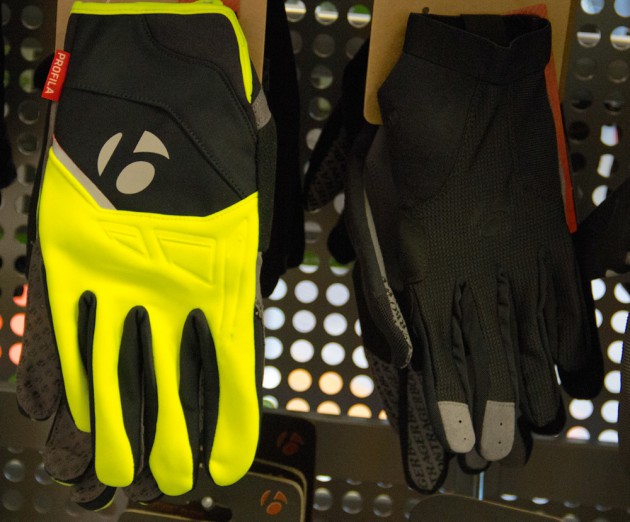
The same is true of these jackets. Your eye is naturally drawn to the high-visibility yellow. It works the same way on the road.
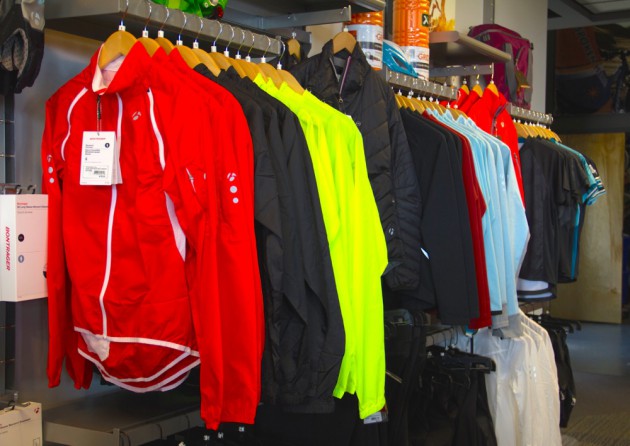
Through 2014, the dominant color you’ll see in cycling gear is this Screaming Yellow. But the trend for 2015 is Hi-Vis or “Safety” Orange—the same color you see on construction workers’ vests and road cones. The people who oversee highway safety didn’t choose that color at random—it is highly effective at drawing attention. And it has the added benefit of already being associated with “caution” in the minds of motorists.
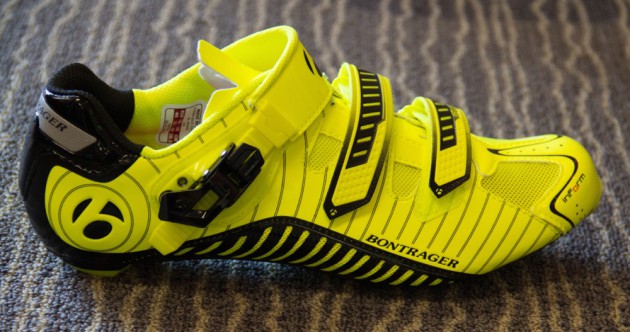
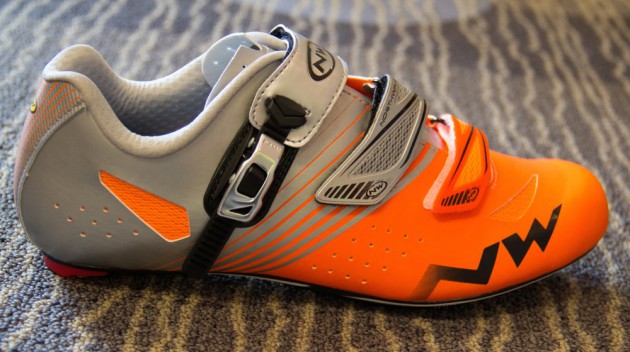
Available Products
High-visibility clothing has expanded far beyond jerseys. Now, if you can name a product, chances are it is available in a bright color. If you wanted to, you could dress yourself head to toe in cycling brights. The latest products include helmets, jackets, vests, arm warmers, gloves, shorts, socks, shoes, and shoe covers.
Which are the best products to buy? Motorists tend to notice things more 1) when they are at the driver’s eye level; and 2) when they are moving. That suggests that you’ll get the most visibility from hi-vis helmets, jerseys, jackets, shoes, and shoe covers. If you ride on narrow roads where you find yourself waving motorists on, then gloves might be a good investment for you.
Research also shows that visibility is improved when two colors are presented in high contrast with each other. This suggests that it’s a better idea to wear multiple colors, instead of dressing head to toe in yellow. The company See Me Wear (www.seemewear.com) claims to have the brightest cycling jerseys on the road because they are created using a mix of fluorescent colors in a chevron design. I’ve seen these jerseys in person, and they are definitely eye-catching and vibrant.
NOTE: Don’t let yourself become overconfident in your perceived safety just because you’re wearing hi-vis clothes. Think of hi-vis gear as something you do in addition to all your other safety skills.
[Thanks to Cycling Spoken Here of Cary, North Carolina (www.cyclingspokenhere.com), for allowing us to invade the shop for information and photographs.]
# # #
Thomas Henson Jr. is an avid cyclist, and finds much happiness in bike rides with his family and friends. He leads the complex injury litigation department of HensonFuerst Attorneys. He can be contacted at ThomasHenson@lawmed.com.


